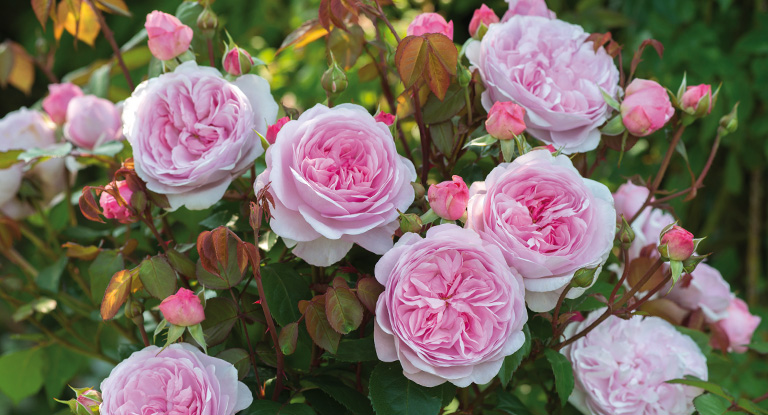Here are 10 simple tips that will enable you to get the best from your Rose.
- Plant your rose somewhere sunny - roses love sun. Partial shade is OK (morning shade) - the more sun the better.
- The more you put in to the soil, the more you will get out of the rose. Dig in Blended Farmyard Manure (£5.99-50 litres) or soil conditioner (£4.99-50 litres) to the planting area and mix it with the soil you back fill with and a mug full of Bone Meal (£4.99-1.5kg) too.
- The rose can be planted at the same depth or deeper than it was in the pot you bought it in. Firm the soil well around the rose - use your foot. Make sure the pot is wet before taking the rose out to plant.
- If planting in the spring, use a rose feed such as Westland rose food (was £4.99 reduced to £2.99) or Neudorff Organic Rose and Shrub feed with mycorrhizal fungi (£5.99 2kg) in the planting mix - otherwise use this around existing roses in February (don't get food on the plant and wash it off if you do). Water it in if it is dry. Re-apply this feed at midsummer.
- If planting in a pot, use a good size pot (roses have big roots), John Innes No3 compost (£5.99) and slow release feed pellets. Food can be added through the growing season with a liquid feed such as Neudorff Organic Rose Feed (£4.99) if necessary.
- If you are planting where roses have been before, mix Rootgrow (£4.99) in to the planting area to combat replant sickness.
- Water the rose thoroughly (watering can full) so the roots are wet all the way through and don't water little and often as it brings roots to the surface. In a pot, soak it until the pot is heavy.
- Repeat flowering roses should be pruned - Gardeners Mate Garden Secateurs - Bypass (was £6.99 reduced to £4.99) - in the early spring (Easter is a good time). Cut them back by about 2/3rd's to outward facing buds where possible. Remove dead, wear or crossing growth altogether. They can be lightly pruned in the autumn to tidy them up for the winter and dead headed (old flowers removed after the flowers have finished) throughout the growing season - cutting back 2 or 3 buds below the flower.
- Repeat flowering climbers can be pruned in the spring too - cut the previous years flowering wood back to 2 or 3 buds (unless the branches are wanted for extension growth) whilst retaining a permanent framework of branches. Remove dead, weak or crossing branches altogether.
- Rambler or once flowering climbers can be pruned after flowering if needed - they do not always need pruning every year. Remove old flowering stems low down to make way for new vigorous growth from the base and lightly cut back remaining stems - tie in new growth as the season progresses. Remove dead, weak or crossing stems altogether.
- At the first signs of disease such as black spot or mildew, spray with a fungicide such as Fungus Fighter (£8.99 concentrate). Use it in the evening when rain is unlikely and the air is still. If you have a problem with Aphids or caterpillars, spray with Neudorff Bug and Larvae Killer RTU (£5.49) - again, using in the evening so you don't kill the bees.

Comments
No commentsLeave a Comment